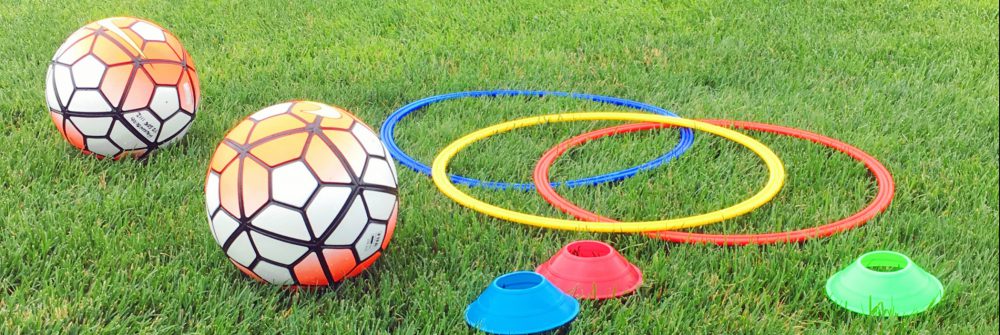| From the “The Secret Sauce for Youth Athletes” – The Body |
National Nutrition Month® is an annual campaign established in 1973 by the Academy of Nutrition and Dietetics. During the month of March, everyone is invited to learn about making informed food choices and developing healthful eating and physical activity habits.
Section 2 of “The Secret Sauce for Youth Athletes” deals with the Body. In recognition if National Nutrition Month, I have included a chapter from the book that introduces a section on Nutrition.
Proper nutrition is a crucial component of the overall health and athletic performance of youth athletes. The food and beverages consumed by young athletes directly impact their energy levels, growth, and development, as well as their ability to train and compete at their best.
Youth athletes require a balanced and nutrient-dense diet that includes a variety of fruits and vegetables, whole grains, lean proteins, and healthy fats. Fruits and vegetables provide essential vitamins and minerals, while whole grains and lean proteins provide energy and support muscle growth and repair. Healthy fats, found in sources such as nuts, seeds, and avocados, are also important for overall health and support brain function.
It is also important for youth athletes to consume adequate amounts of carbohydrates to fuel their intense physical activity. Carbohydrates provide the body with energy, and consuming them before and during exercise can help maintain optimal athletic performance. Young athletes should aim to include a variety of healthy carbohydrates, such as whole-grain bread and portions of pasta, fruits, and vegetables, in their diets.
In addition to a balanced and nutritious diet, youth athletes should also pay attention to hydration. Adequate fluid intake is essential for overall health and athletic performance, and young athletes should aim to drink water before, during, and after physical activity. Sports drinks containing electrolytes can also be beneficial for young athletes engaging in intense physical activity lasting longer than an hour.

It is important for youth athletes to avoid nutrient-poor foods, such as sugary drinks, processed snacks, and high-fat fast food, as these can negatively impact athletic performance and overall health. Additionally, young athletes should be cautious of consuming supplements, as these can have harmful side effects and are often unnecessary with a balanced and nutritious diet.
Nutrition Plan/Approach
Nutrition is an essential component of athletic performance, and it is especially important for youth athletes. The proper intake of nutrients can help young athletes perform at their best, recover faster from intense training and competition, and maintain their overall health. In this section, we will discuss the importance of nutrition for youth athletes and provide guidelines for pre-workout, during training and competition, recovery after, as well as in-season and out-of-season nutritional needs.
Guideline 1: Pre-Workout Nutrition. The food consumed before exercise can have a significant impact on the athlete’s performance. The goal of pre-workout nutrition is to provide energy for the activity ahead, enhance mental focus, and minimize fatigue. Some of the essential nutrients to consume before exercise include carbohydrates, protein, and fats.
Guideline 2: During Training and Competition. Nutrition During exercise, the body requires energy to perform at its best. Therefore, proper nutrition during training and competition is critical. The goal of during-training nutrition is to maintain energy levels, delay fatigue, and improve overall performance. Hydration is also vital during exercise to maintain optimal body temperature and prevent dehydration.
Guideline 3: Recovery After Exercise Nutrition. Post-workout nutrition is essential for muscle recovery and repair. After an intense workout, the body needs nutrients to replenish energy stores, repair damaged tissues, and rebuild muscles. Protein, carbohydrates, and electrolytes are essential nutrients to consume after exercise.
Guideline 4: In-Season Nutritional Guidelines . During the season, young athletes need to maintain their nutrition to support their training and competition demands. Proper nutrition during the season helps athletes perform at their best, recover faster, and avoid injury. In-season nutritional guidelines include eating a balanced diet, staying hydrated, and timing meals appropriately.
Guideline 5: Out-of-Season Nutritional Guidelines. During the off-season, young athletes need to focus on proper nutrition to support their training and preparation for the upcoming season. Out-of-season nutritional guidelines include consuming a balanced diet, increasing protein intake, and monitoring calorie intake. Young athletes should also take this opportunity to address any nutritional deficiencies. Conclusion: Nutrition is an essential component of athletic performance for young athletes. The right nutrients at the right time can help youth athletes perform at their best, recover faster, and maintain their overall health. Proper nutrition includes pre-workout, during training and competition, recovery after, as well as in-season and out-of-season nutritional guidelines. By following these guidelines, young athletes can optimize their performance and achieve their athletic goals.
As we celebrate National Nutrition Month®, it’s imperative to recognize the critical role that proper nutrition plays in the lives of youth athletes. With Section 2 of the Secret Sauce for Youth Athletes dedicated to the Body, including 4 chapters on Nutrition, we emphasize the significance of making informed food choices to enhance both health and athletic performance.
Let’s champion the importance of nutrition in youth sports, empowering young athletes to fuel their bodies intelligently, sustain peak performance, and ultimately, excel both on and off the field. As we embark on this journey of nourishing the future generation of athletes, let’s commit to fostering a culture of informed eating choices, ensuring that every aspiring athlete has the opportunity to thrive.
If this is your first visit to this blog, check out other useful articles for youth athletes, and aspiring student-athletes. Get a copy of the Secret Sauce for Youth Athletes for tips and recommendations on Nutrition, Hydration, Sleep and other topics important for the Body of a Youth Athlete. Available at Amazon, Barnes & Noble, and your other favorite online book stores.
Join our community by subscribing to this blog and following @coachrich8 on Instagram, Facebook, Mastodon, and Twitter. Discover invaluable life skills through youth sports. Share this with others embarking on their own journeys.
Sources:






